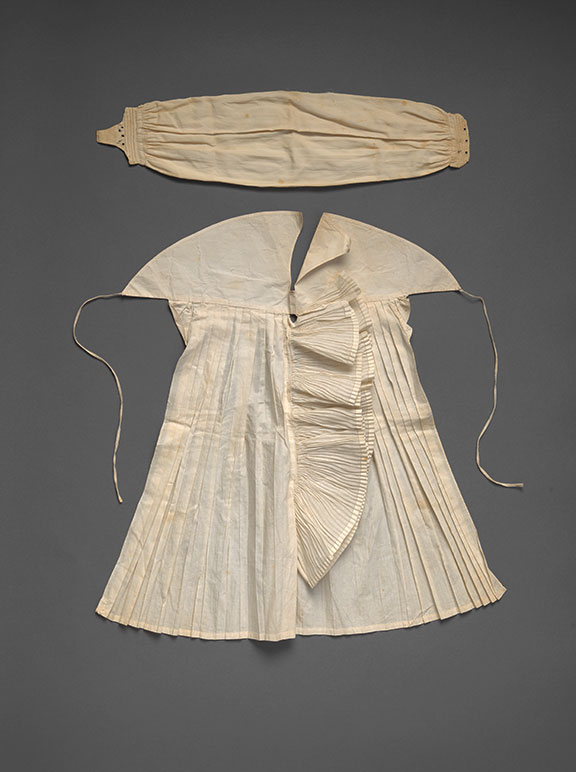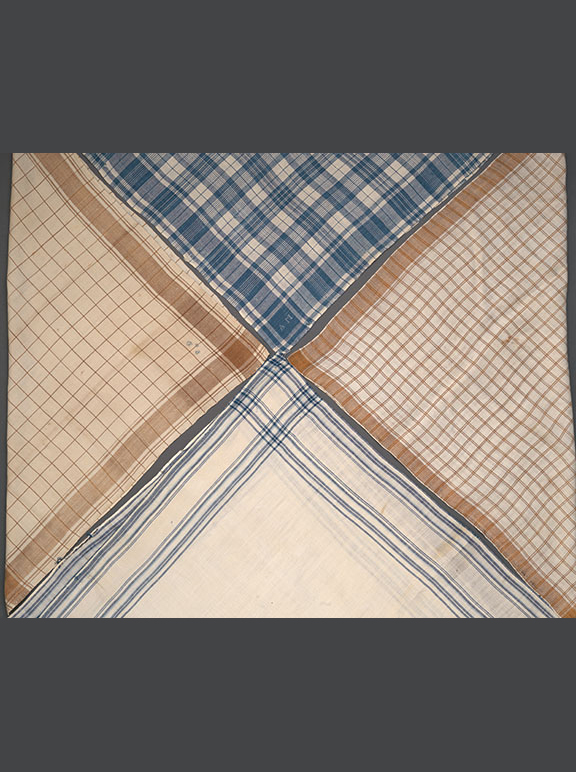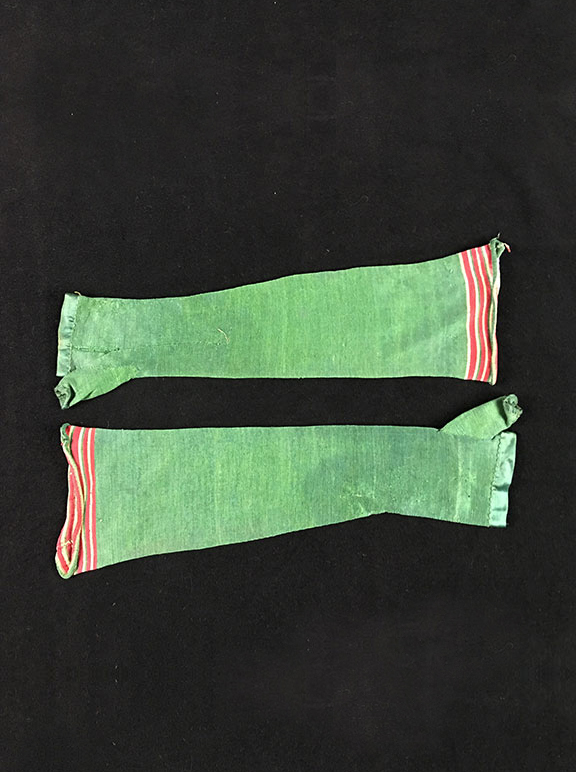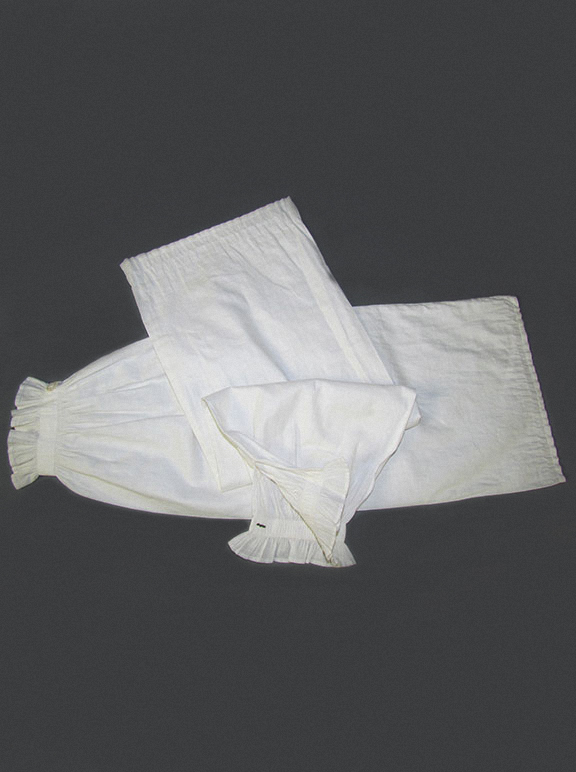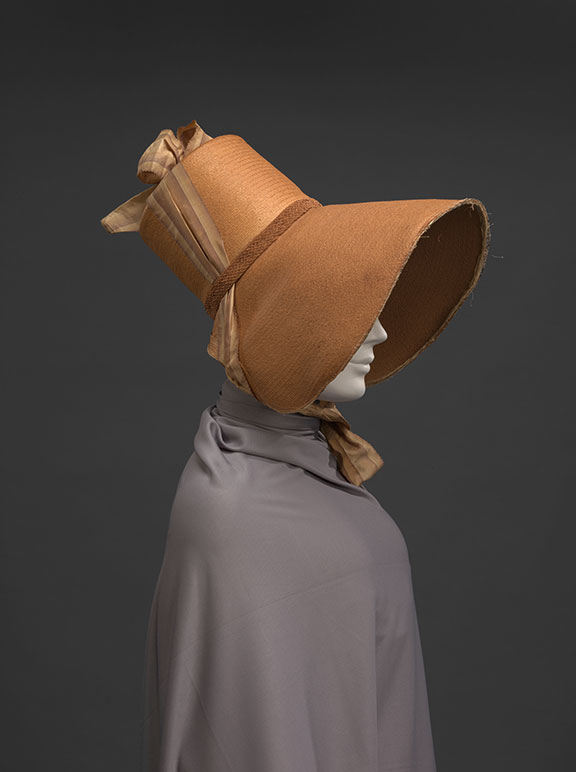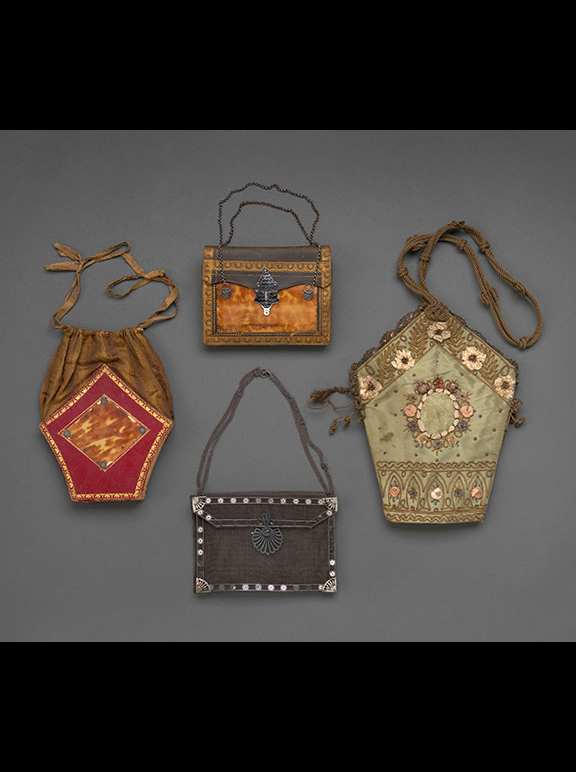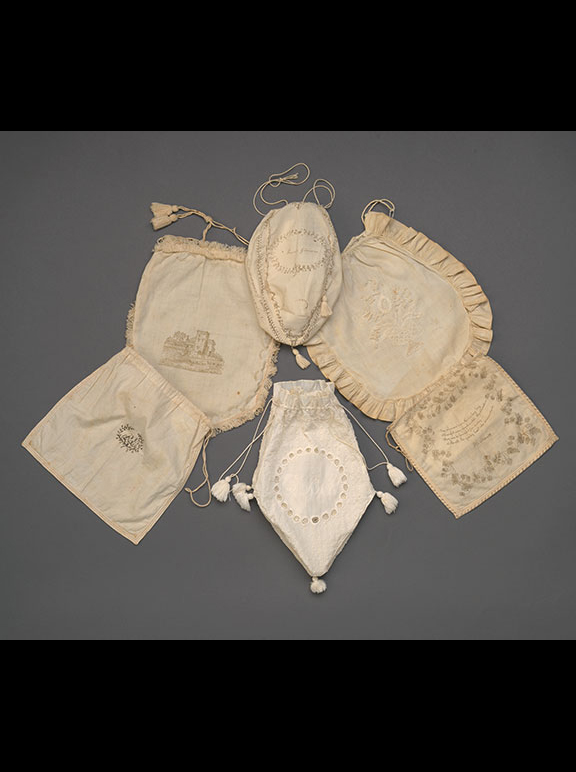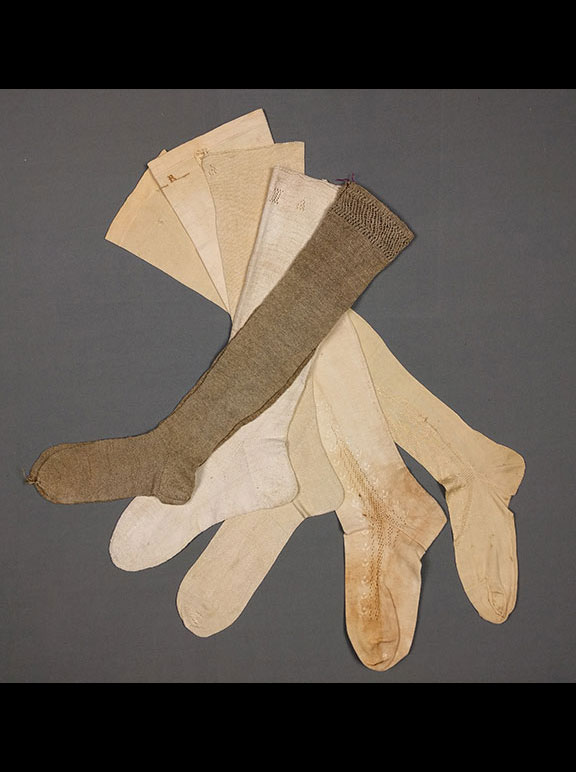“Shirt Front” and Stock
The famous English dandy Beau Brummel, credited with setting new standards for men’s style in the early 1800s, declared that one key to dressing well was “clean linen, and plenty of it.” Owning many linen shirts was the answer; but wearing a false shirt front, or what we would now call a “dickey,” was a more cost-effective strategy to extend the use of a shirt.
The stock belongs to an earlier era than the shirt front. Stocks were rectangles of fine linen, arranged in small pleats and sewn into linen tabs which fastened around the neck with a metal stock buckle. In the 1800s, the stock was replaced in fashionable dress with the cravat, the predecessor to the necktie. Some older men retained their stocks long after they went out of style, including Thomas Jefferson, who was known to have worn stocks well into the 1800s.
Shirt front, linen, early 1800s, 3229, gift of Grace Harvey Rheinstrom; Stock, linen, 927, 1770-1810, gift of Jane W.A. Laidly.

